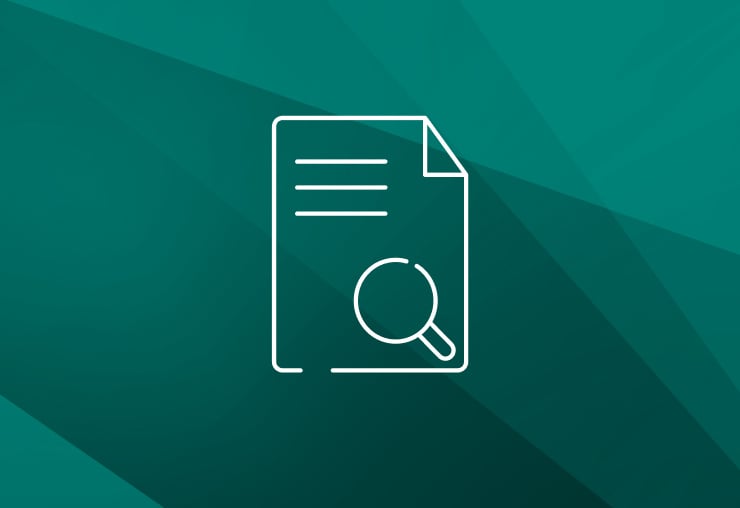
Insights from the first four months of redetermination are showing impacts to the Medicaid population. According to the latest Medicaid renewal data captured in the KFF Medicaid Enrollment and Unwinding Tracker, over 3.7 million Americans across 41 states have lost their coverage.1 The challenges expected from the redetermination process around completion of paperwork are yielding almost 3 out of 4 individuals reportedly dropped due to incomplete paperwork or missing required documentation.
[1] Data as of August 1, 2023

As U.S. Department of Health and Human Services (HHS) Secretary Xavier Becerra stated in his June 12th letter to U.S. Governors, “as full Medicaid renewals begin, it is critically important to ensure that individuals do not lose coverage due solely to administrative processes.” If beneficiaries submit incomplete redetermination paperwork, states are required to contact the beneficiary and work through information fields that are missing. This may cause multiple rounds of submissions in order to complete the redetermination process paperwork. For beneficiaries that are non-responsive, states will have to manage multiple rounds of outreach to the individual. This overall increase in additional support for enrollment departments comes at a time when many are experiencing staffing shortages and workload capacity issues.
What challenges do beneficiaries face when completing their paperwork?
This is the most significant question that states need to consider when determining the best way to support beneficiaries and lower the administrative burden. Beneficiaries who do not complete their redetermination paperwork typically experience one of these challenges:
- They are lacking awareness of the process and are not responding to outreach notices due to not opening mail.
- They are lacking awareness of the process and are not receiving outreach notices due to having incorrect contact information on file with the state.
- They are lacking awareness of the process as they have coverage through other sources and should be disenrolled (i.e., coverage through an employer, coverage through another state if they moved).
- They are aware of the process but experience confusion regarding what types of forms need to be completed, which may lead to the submission of incorrect paperwork or not submitting any of the necessary paperwork. Some of the confusion may be related to language or cultural appropriateness of the forms or communications.
- They are aware of the process, are overwhelmed by the requirements, and do not start any of the necessary documentation.
As more is learned about the redetermination process by the end of fall, other reasons for beneficiaries not completing redetermination forms may come to light and will need to be addressed.
What can states do to help beneficiaries?
States are using multiple tactics to educate and support beneficiaries. As captured in this Medicaid Redeterminations NAMD article, “even before the official start of redeterminations, states were running digital, mail and text campaigns urging current members to ensure that their contact information is up-to-date. These campaigns also urged members to respond to requests from their Medicaid agency when they received their redetermination packets in the mail. State call centers and Medicaid managed care plans are now not only answering incoming calls from current members, but also reaching out to those who have not responded. … In addition, states are partnering with community-based organizations, providers, hospitals, and health insurance plans in an attempt to make sure that no one falls through the cracks.”
We are still at the beginning of the process, which allows states time to make changes to their process to be more user-friendly and would help with decreasing the number of incomplete applications, state workload burden, and dissatisfied experiences for beneficiaries. Some process approaches states may want to consider when looking into when and how to improve the redeterminations process:
![]()
-
What can be learned from a data analysis from the initial months of redeterminations?
Analysis of ongoing redeterminations process data can be very useful. Breaking down results in terms of how many individuals completed certain actions, as seen in the list below, could help to inform and tailor outreach strategies the necessary groups:
- Successfully completed the process
- Stopped after a few rounds of paperwork
- Updated their address but did not start paperwork
- Were unable to be reached – mail was returned
- Non-responsive with no return mail
-
Is there an opportunity to provide individual paperwork assistance?
This type of assistance could be provided through a virtual support network of Community Health Workers (CHWs) who are subject matter experts on the redetermination process. As beneficiaries have questions on their application, they would be able to outreach to a Redetermination Support Line staffed by CHWs to help them with their specific questions, review paperwork, and / or interpret communications from their state. CHWs will also have the opportunity to provide ongoing beneficiary feedback to the state.
-
If data analysis reveals a significant unresponsive population, is there a need for CHWs to focus efforts on specific communities and supply in-person support?
Data analysis conducted by the states can pinpoint needs based on location as well as population demographics. CHWs can be utilized for customized outreach as they are trusted members of the community who specialize in building relationships with community leaders, community organizations, and businesses. More specifically, community-based CHWs will have an understanding of beneficiary's cultural beliefs and languages and will be able to address community and individual concerns related to the redetermination process.During the Public Health Emergency, Acentra Health* partnered with North Carolina to develop a network of virtual and onsite CHWs. The virtual CHWs were readily available when individuals wished to reach out for assistance. In addition, onsite CHWs were engaged to educate and provide assistance to individuals through local organizations and events. This two-fold approach provided tailored outreach options that worked to meet the population’s lifestyles and communication preferences.* Formerly Kepro and CNSI

Some states may have existing CHW / Assistor / Navigator networks that could be dedicated to supporting on redeterminations work. For states that do not have a network or need to scale their outreach efforts, working with an experienced and nimble partner has several major advantages. With the support of an industry partner, states have the ability to provide additional focus to the redetermination process, quickly build and scale a team of CHWs, and adapt programs as different needs are identified throughout the remainder of 2023. States will benefit from the added resource support, and will undoubtedly see an increase in completed renewal form submissions requiring fewer rounds of updates for missing or incomplete paperwork. This partnership could also alleviate beneficiary pain points with the process and improve the cumbersome nature of the process that some may experience.
Acentra Health has over 30 years of Medicaid experience and is partnered with 45 state Medicaid agencies. We offer innovative solutions to help states achieve their goals for improved health outcomes, administrative efficiencies, and cost savings. Every state has unique challenges, and we welcome the opportunity to have a conversation about how to best work together to meet your needs.






